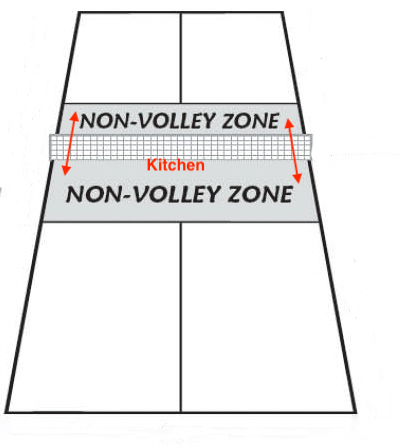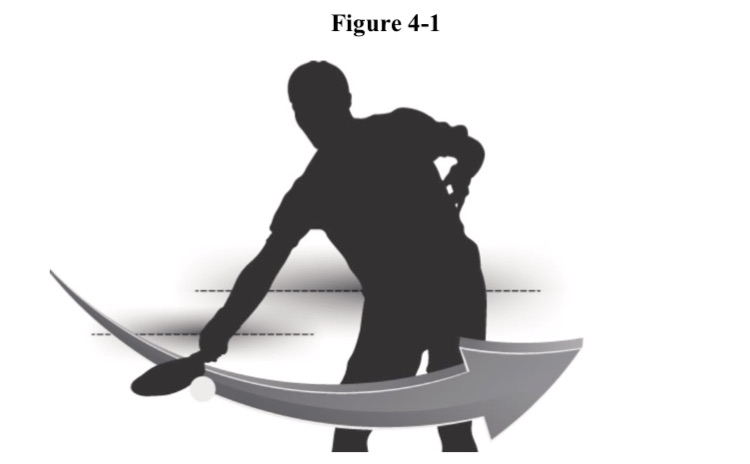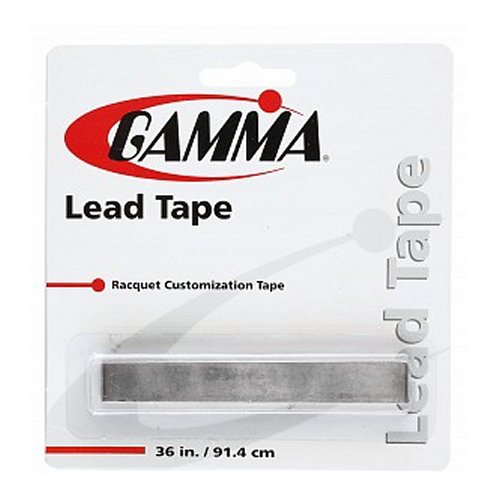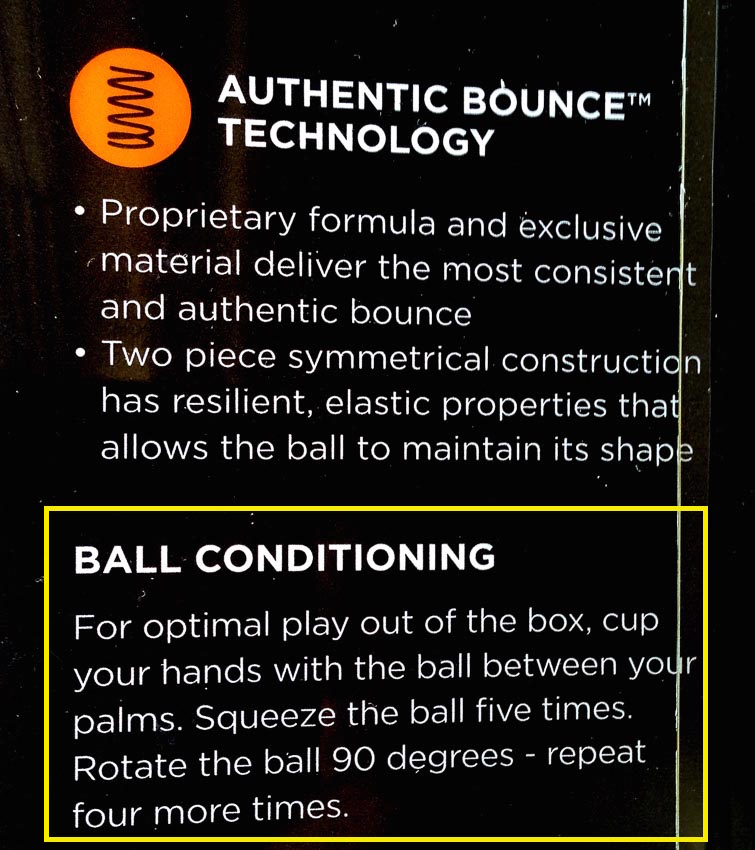After a pickleballer plays their first several games, they soon understand that the Non-Volley Zone (see diagram below) is often referred to as the Kitchen.

Picture Courtesy of School Specialty – Modified for this post.
It is interesting to me that I will often be approached by a pickleballer who asks me: “Do I have to wait until the ball bounces to go into the kitchen?” or “When can I go into the kitchen?” At times, these are people who have been playing for years. Somehow a number of players are under the impression that it is a fault just to step into the kitchen; anytime.
As always, let’s check to see what the rulebook tells us about this situation. SECTION 9 of the 2019 USAPA & IFP Official Tournament Rulebook (pp. 36-37) goes into detail about the non-volley zone rules.
It seems to me there are four important subsections regarding this discussion.
9.A. All volleys must be initiated outside of the non-volley zone.
It is a fault if a person volleys the ball (hits it in the air. i.e without a bounce) while standing inside the NVZ. NOTE: It would also be a fault if a player volleys a ball and their foot is touching any part of the NVZ line even if the rest of their body is not in the kitchen.
9.E. A player may enter the non-volley zone at any time except when that player is volleying the ball.
It is not a fault to enter the NVZ at any time as long as that player does not volley the ball. A player can remain the NVZ the entire game if they wish. Of course this is not a good strategy and would be a rather absurd behavior, but there is no rule against it.
9.F. A player may enter the non-volley zone before or after returning any ball that bounces.
A pickleballer is allowed to enter the NVZ to return a ball that bounces. They may enter either before or after the ball bounces to return a ball that has bounced in the NVZ.
9.G. A player may stay inside the non-volley zone to return a ball that has bounced. There is no violation if a player does not exit the non-volley zone after hitting a ball that bounces.
A player may remain inside the NVZ after a bounced ball is returned. They do not have to exit the NVZ at any specified time interval.
NVZ Best Practice in General
Most accomplished players remain very close to, but not in, the NVZ during much of the game. If a ball falls into the NVZ and bounces, they quickly go after the ball, return it and then step back out of the NVZ. This enables the player to volley a ball that comes their way because they have vacated the NVZ.
I would be remiss if I didn’t point out another important, and often misunderstood nuance about the NVZ highlighted below in section 9C.
9. C. – It is a fault if the player’s momentum causes the player to contact anything that is touching the non-volley zone, including the player’s partner.
9.C.1. It is a fault even if the ball is declared dead before the player contacts the non-volley zone.
A player’s momentum cannot carry them into the NVZ after a volley or it is a fault. Even if the ball is dead at the time, their momentum cannot cause them to step into the NVZ after a volley. A player may not touch their paddle down in the NVZ or drop anything into the NVZ or that too is a fault if it is done in the act of volleying.
NOTE – These are not the ONLY rules regarding the NVZ. I only selected those sections that help to answer the underlying basic question of when a player can enter the NVZ without creating a fault.
I believe any serious pickleball player can learn quite a bit by reading the USAPA & IFP Official Tournament Rulebook. You can order your copy HERE! You can also download a free PDF HERE.
If you have questions, leave them in the comment section and I will do my best to answer them.
**********
More Pickleball Videos and Information
To See additional Pickleball Videos & Information Click Here (primarily for beginners and less experienced players)
Check out Additional Pickleball Information and Videos! (for all players including average to more experienced players)
**********
All original content on this blog is copyrighted by Jeffrey B. Ross with ALL Rights Reserved. While reference links back to JBRish.com are appreciated and encouraged, please acquire approval for any reproduction of original content from this website.
©Jeffrey B. Ross 2014 – 2019 – JBRish.com





